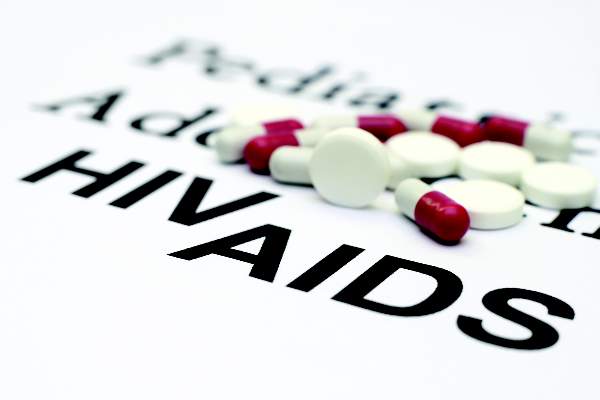A great volume of HIV and AIDS research enters the medical literature every month. It’s difficult to monitor everything, so here’s a quick look at some notable news items and journal articles published over the past few weeks.
Enrollment has begun in the first of two multinational clinical trials of an intravenously delivered investigational antibody for preventing HIV infection . Known as the AMP Studies, for antibody-mediated prevention, the trials will test whether giving people an investigational anti-HIV antibody called VRC01 as an intravenous infusion every 8 weeks is safe, tolerable, and effective at preventing HIV infection.
Despite long-term antiretroviral therapy, HIV-1–infected adults had higher levels of immune activation, regulatory T-cells, PD-1–expressing CD4+ cells and shorter telomeres , according to a study in the Journal of Infectious Diseases. The authors say this suggests that HIV-1 impacts immune function irreversibly, with several pathways that are persistently abnormal during effective ART.
An HIV pharmacist-monitoring service can decrease medication errors in HIV-infected patients as they transition between outpatient and inpatient care , according to a study in HIV Medicine. Researchers also found patients receiving protease inhibitor–based therapy or with renal insufficiency are at higher risk for medication errors upon admission.
A case study in the Lancet HIV described the implementation of an automated system to monitor and characterize HIV transmission hot spots in British Columbia . Investigators said the system made secondary use of routinely collected HIV genotypes, was cost-effective, attained near real-time monitoring of new cases, and could be implemented in all settings in which HIV genotyping is the standard of care.
Even with early treatment and access to care, an 8-year gap in life expectancy remains for HIV-infected compared with HIV-uninfected individuals , according to a Kaiser Permanente cohort study.
While the number of infants infected with HIV is declining with the rise in interventions for the elimination of pediatric HIV infection, the number of uninfected infants exposed to HIV through their HIV-infected mothers is increasing .
Lamivudine monotherapy offers a potential alternative approach to antiretroviral management in young HIV-infected patients pending availability and/or willingness to adhere to second or third line therapies , new research indicates, but it is associated with substantial immunologic decline. Investigators said this strategy should be avoided in patients with CD4 less than or equal to 200 cells/mcL.
Recent research suggests the current method used to estimate the number of persons living with HIV (PLWH) in the United States, which relies on HIV case reporting, may have overestimated PLWH in the United States . The investigators recommend using comprehensive HIV laboratory reporting data to estimate PLWH at both the national and local levels.
Medical care interruptions were associated with a higher proportion of viral loads below detection in a French study cohort , ultimately compromising individual and collective treatment benefits.
Despite associations with nephrotoxicity, the use of tenofovir disoproxil fumarate (TDF) by HIV-infected persons was associated with higher serum bicarbonate concentrations longitudinally , and obscured the strong associations of bicarbonate with chronic kidney disease risk. The researchers said the role of bicarbonate concentrations as a tool to monitor kidney health in HIV-infected persons may be limited in the setting of TDF use.
In a recent study, interferon and ribavirin-free therapy with sofosbuvir along with daclatasvir in HIV/hepatitis C virus–coinfected patients was well tolerated and achieved sustained virologic response 12 weeks after the end of treatment in all HIV/HCV patients with advanced liver disease . It also significantly improved liver stiffness, suggesting antifibrotic and antiportal hypertensive effects.
Elevated soluble ST2 (sST2) levels in early HIV infection were correlated with CD8 T-cell count, immune activation, and microbial translocation in a recent study ; may serve as a marker of HIV disease progression and gut damage; and may directly contribute to HIV pathogenesis.
Accurate screening tools to determine fracture risk in HIV-infected patients, particularly those that use clinical risk factors alone , are not yet available to clinicians, according to a review in Current Opinion in HIV & AIDS.
A study in Clinical Infectious Diseases found that 75% of a 234-person cohort of U.S. children with perinatal HIV had antiretroviral resistance , substantially higher than that of the reference laboratory overall (36%-44%). Researchers said resistance to newer antiretrovirals and to all ARVs in a class was uncommon, and the only factor independently associated with future resistance was a higher peak viral load.
A cohort study in Kenya found that providing multiple HIV self-tests to women at high risk of HIV infection was successful in promoting HIV testing among their sexual partners and in facilitating safer sexual decisions. The investigators said this strategy warrants further consideration as countries develop self-testing policies and programs.
Tuberculosis risk for HIV-infected patients in the first 6 months following highly active antiretroviral therapy (HAART) initiation is not higher than prior to HAART initiation after adjusting for CD4+ count and viral loads , according to a study in JAIDS. The authors say these findings suggest that short-term TB risk may be related to low CD4+ counts and high viral loads near HAART initiation and support early HAART initiation to decrease TB risk.
In an HIV Medicine review essay, researchers assessed the future role of tenofovir alafenamide (TAF) , a novel prodrug of tenofovir, in the future of HIV treatment. They concluded that TAF is an agent with a promising role within future ART regimens that aim to deliver undetectable viral load, while requiring less monitoring and having a safety profile designed to minimize comorbid risks while supporting good long-term health.
Researchers say they have developed the first potent and broad variable- and single-domain antibodies (VL sdAb) fusion inhibitor of HIV infection . The study published in the journal AIDS also gives insights into engineering strategies that could be explored to enhance the development of antiviral drugs.
HIV-infected women in Zambia identified more disincentives and reported more negative experiences accessing postnatal care than HIV-uninfected women , according to a recent study. As a result, HIV-infected women were less likely to visit a clinic for newborn care if the clinic or waiting area was a common space used by HIV-uninfected women and their children.
Diabetes mellitus prevalence was higher among younger patients with HIV infection, compared with the background population in Guinea-Bissau , according to a recent study. Traditional risk factors for diabetes, such as advancing age and a family history, apply also for ART-naive patients with HIV, investigators said.
The majority of individuals presenting to physicians with primary HIV infection (PHI), defined as within 6 months from estimated date of infection , have abnormal CD4/CD8 ratios, a U.K. cohort study found. The sooner antiretroviral therapy is initiated in PHI, the greater the probability of achieving normal CD4/CD8 ratios, researchers said.
On Twitter @richpizzi





